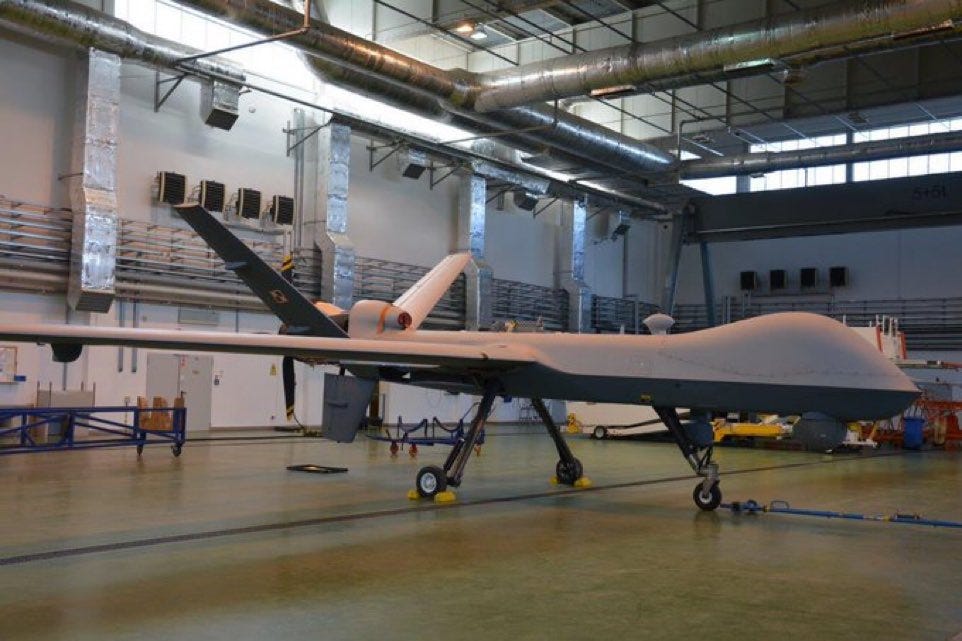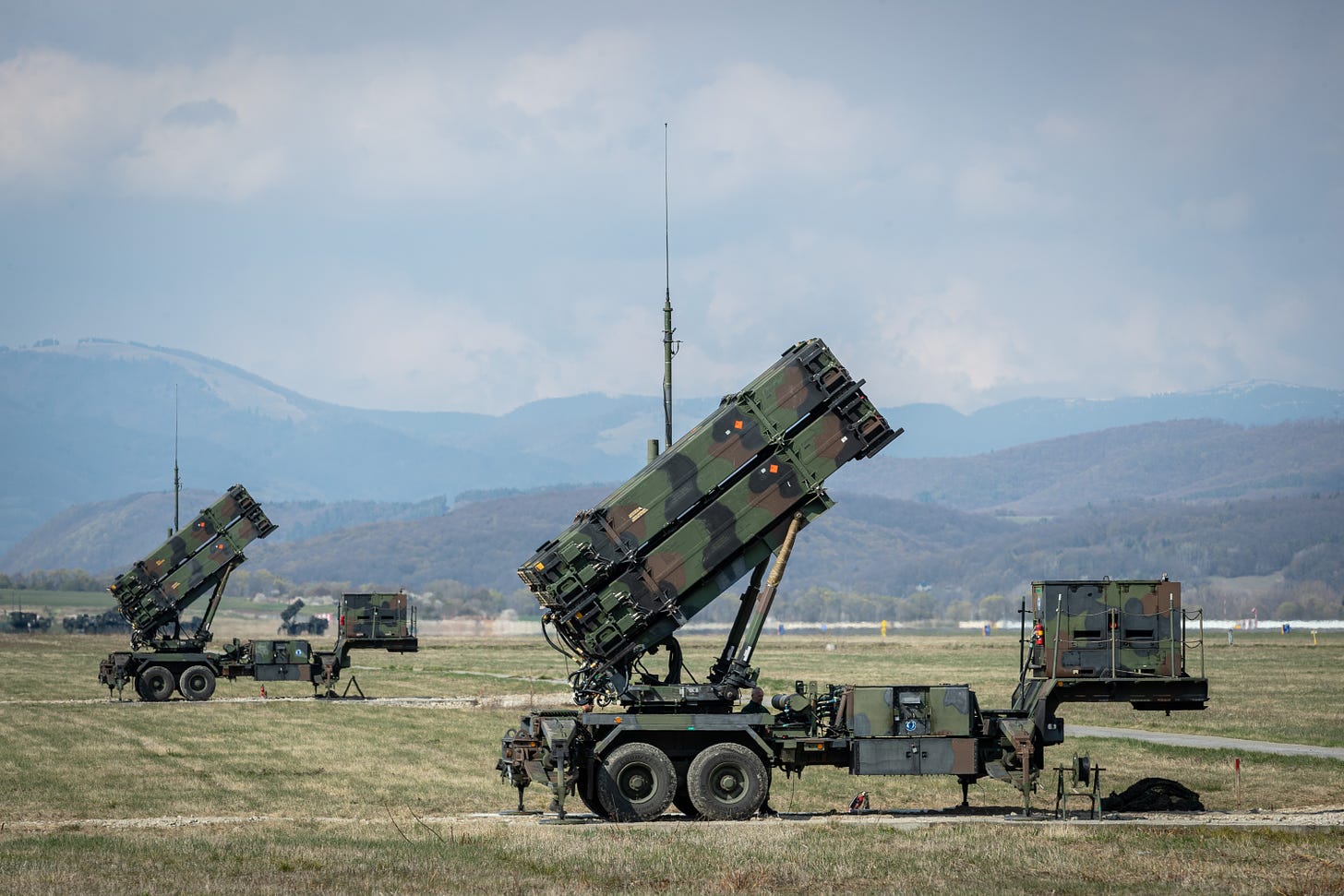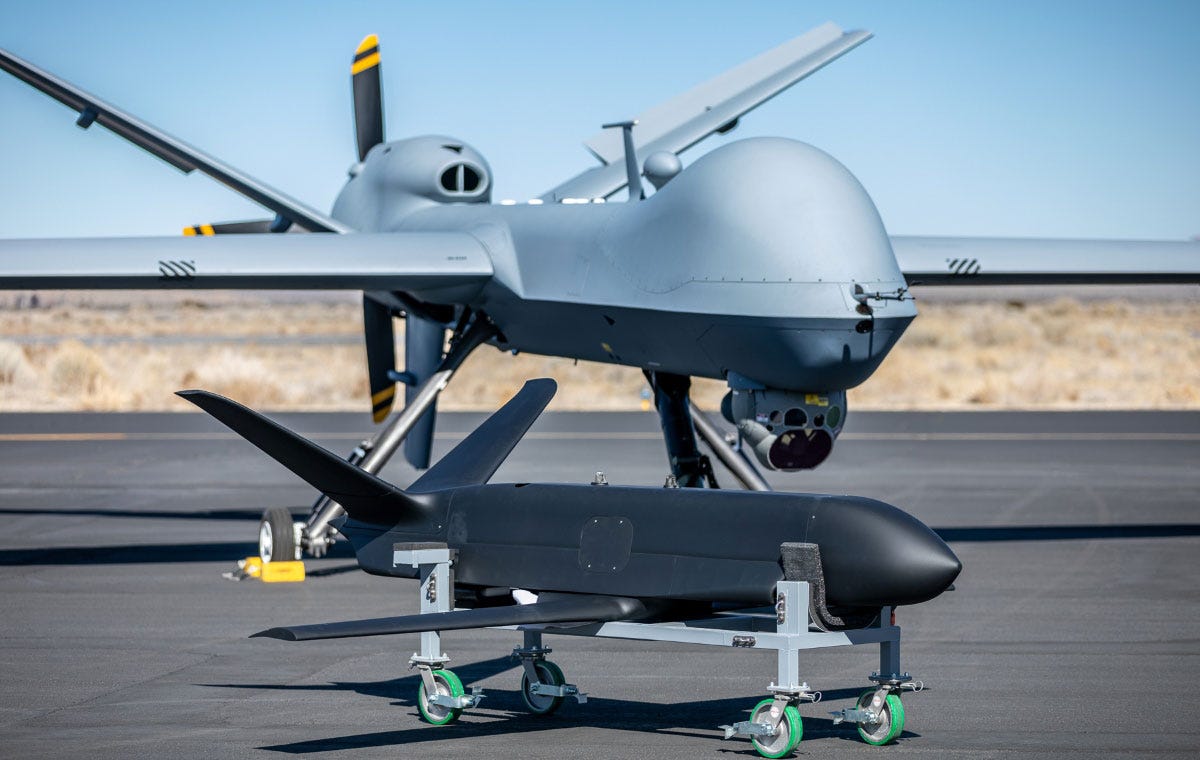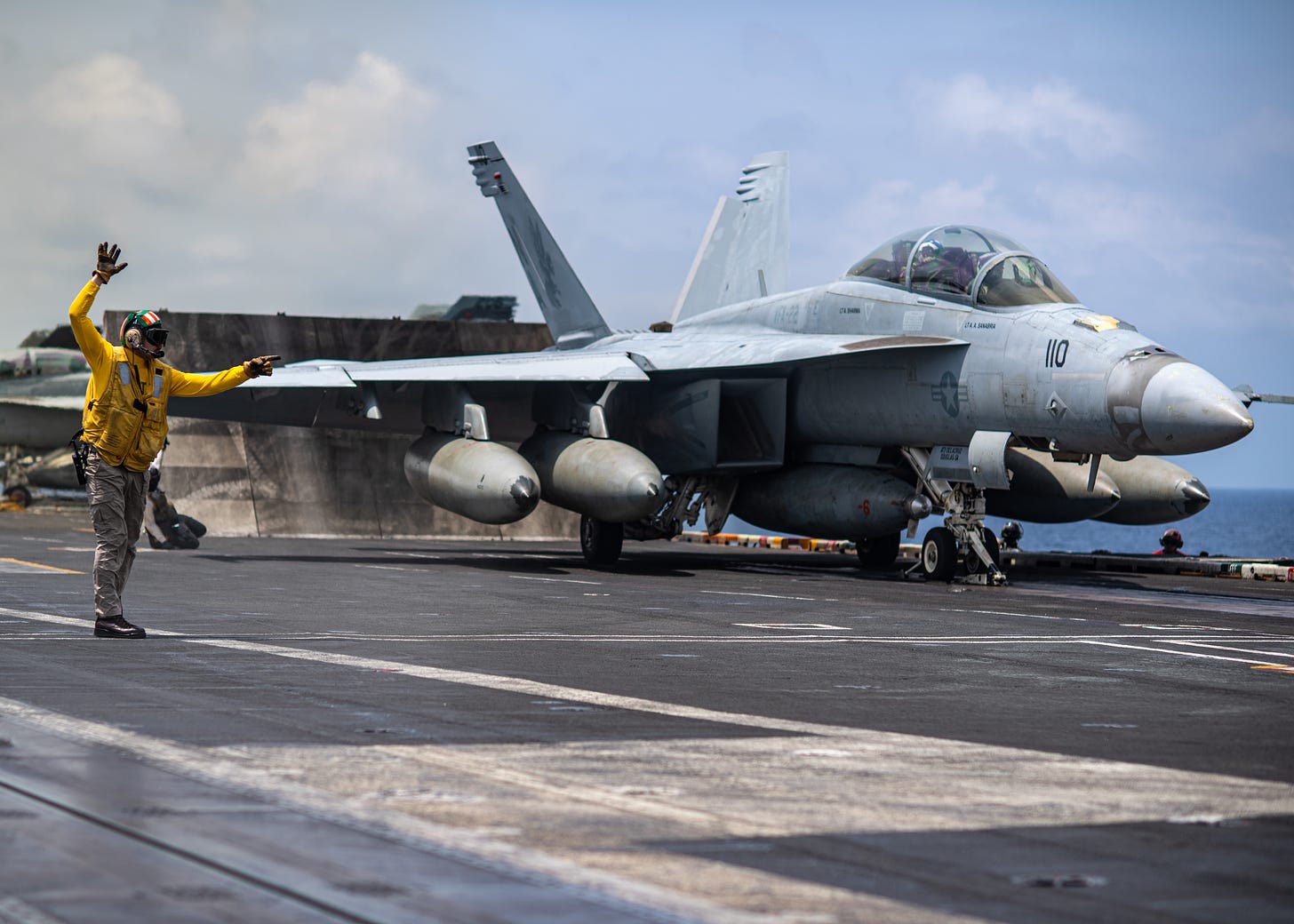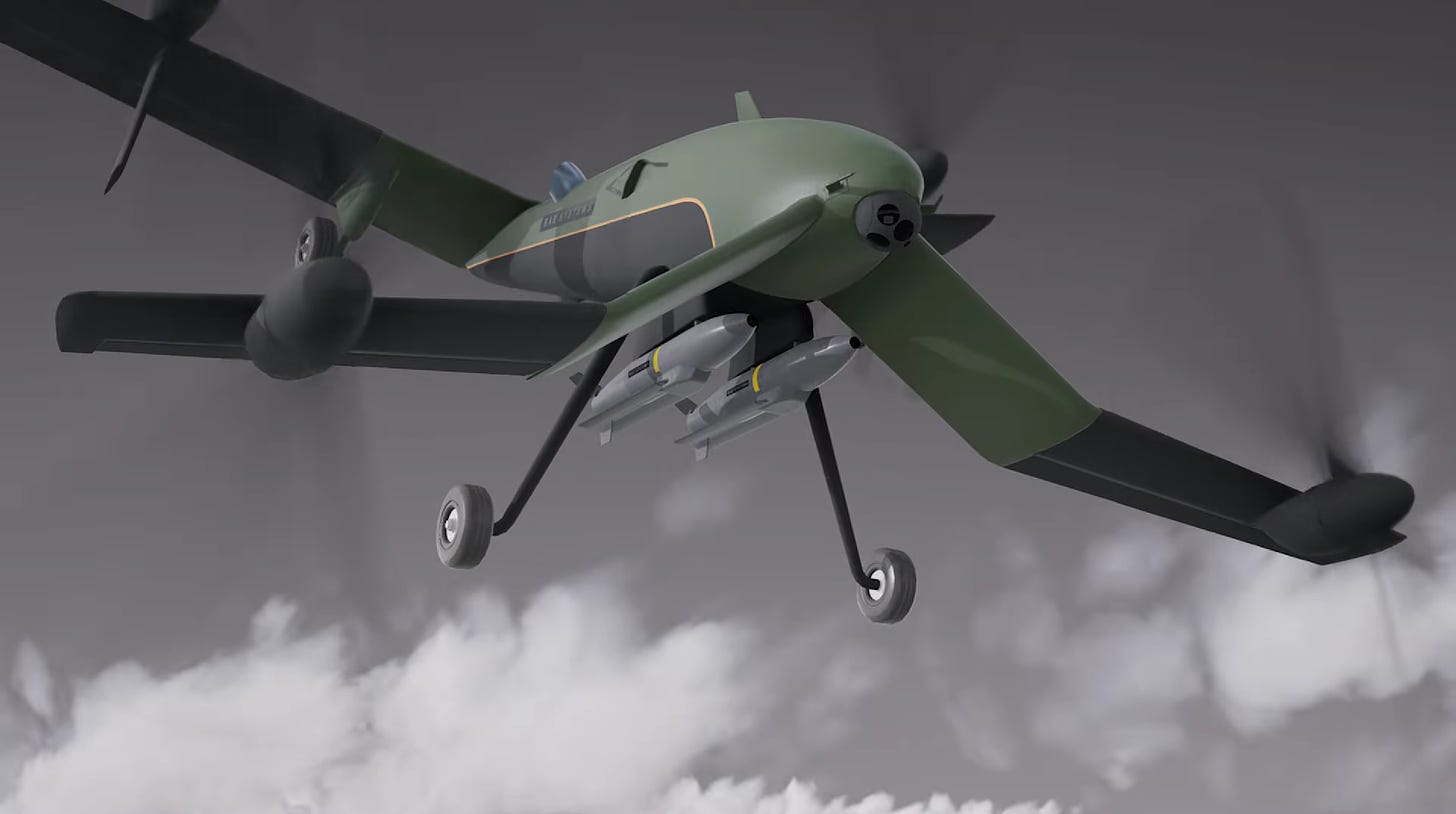Surveillance balloons, tests and unmanned aircraft: February in military aerospace
The second month of 2023 has been marked by hysteria about high-altitude balloons, test campaigns of new capabilities, and news stories about unmanned aircraft systems
The biggest story of this month is the Chinese high-altitude surveillance balloon that passed over the continental United States. As the incident has been widely covered in mainstream media, it’ll only be briefly discussed here. The balloon entered U.S. airspace on January 28 and U.S. officials disclosed it to the public a week later. Over the next few days, various U.S. aircraft, including at least two U-2S Dragon Lady planes, monitored, tracked and gained intelligence on the balloon. Finally, an F-22 Raptor fired an AIM-9X Sidewinder missile at the balloon over the Atlantic Ocean on February 4. Following the incident, three unidentified objects were shot down above the U.S. and Canada but these were likely private balloons that were launched for research purposes.

Other news stories
The month started with a DARPA announcement that General Atomics and Aurora Flight Sciences will develop the designs for the Liberty Lifter Seaplane Wing-in-Ground Effect full-scale demonstrator. The program aims to design, develop and fly a long-range, low-cost seaborne transport aircraft. Phase 2, which includes the demonstration flight, is scheduled to start in mid-2024.
On February 2, Reuters reported that an Israeli military officer disclosed that Heron TP drones have ‘‘an effective payload of around a tonne.’’ The drones, however, cannot carry a one-tonne bomb as the munitions need to be balanced under the drones’ wings. The website of Israel Aerospace Industries, the company that developed and produces the drones, states that the maximum payload weight is 2,500 kilograms. The comments of the Israeli military officer suggest that more than 1,000 kilograms is ‘reserved’ for sensor, intelligence and communication payloads.
That wasn’t the only drone story of February 2, because General Atomics announced that the company will manufacture and perform flight tests with one of its drones from their Gambit family for the Air Force Research Laboratory. The contract is part of the secretive Off-Board Sensing Station program that seeks to develop and test scalable, modular and attritable drones to provide sensor extension for crewed combat aircraft.
That same day, General Atomics disclosed a flight test of an MQ-9A remotely piloted aircraft with a ‘‘Low Earth Orbit (LEO) satellite communications Command and Control system.’’ The flight test, which was conducted in December 2022, demonstrated the capability to control and pass data to and from the MQ-9 using satellites in LEO. This capability enables ‘‘pole-to-pole operations,’’ should decrease operational costs, requires a ‘‘smaller hardware footprint’’ and ‘‘will also provide resilient connectivity that allows operators to pass much more data to and from the aircraft.”
To support data acquisition from Chinese satellites in polar orbits, new satellite ground systems will be constructed at the Zhongshan Station in Antarctica. Although the primary mission for these systems will be to provide more frequent downlink opportunities for Chinese satellites, the network could be used to monitor and potentially target other nations’ spacecraft as well.
In the first week of February, Lockheed Martin announced that an AH-64E V6 helicopter successfully launched two Spike NLOS missiles during a live fire event in January. The Spike NLOS system is currently in testing to qualify the design for airworthiness release, after which the system will be fielded on U.S. Army AH-64E helicopters ‘‘by September 2024.’’
In early February, The War Zone reported that the C-130 Seaplane program has been delayed for a second time. The MC-130J Commando II Amphibious Capability aircraft was intended to perform a flight test in 2023, but the capability demonstration is not scheduled anymore because of funding challenges and ‘‘a recent reprioritization of capabilities.”
While the U.S. military has delayed the development of a new aircraft variant, the Iraqi Army is struggling to maintain its current fleet of Russian-made Mi-17 helicopters. As a result, the Iraq Army plans to replace its fleet of Mi-17 transport helicopters with a fleet of four Bell 412EPX and sixteen Bell 412M helicopters. The decision was accelerated by the difficulties to access spare parts for the Mi-17s as a result of the war in Ukraine.
On February 4, a drone crashed in northern Mali. While no drone operator confirmed a crash,
found that it was likely an MQ-9 Reaper. Both France and the United States are known to operate MQ-9 Reapers in the region but no one acknowledged the loss of a drone.A day later, on February 5, Canada officially announced a CP-140 Aurora maritime patrol aircraft deployment to ‘‘support Canada’s efforts to disrupt the activities of gangs in Haiti and demonstrate Canada’s commitment to the Haitian people.’’ The aircraft was already operating in the region for three weeks when the deployment was announced.
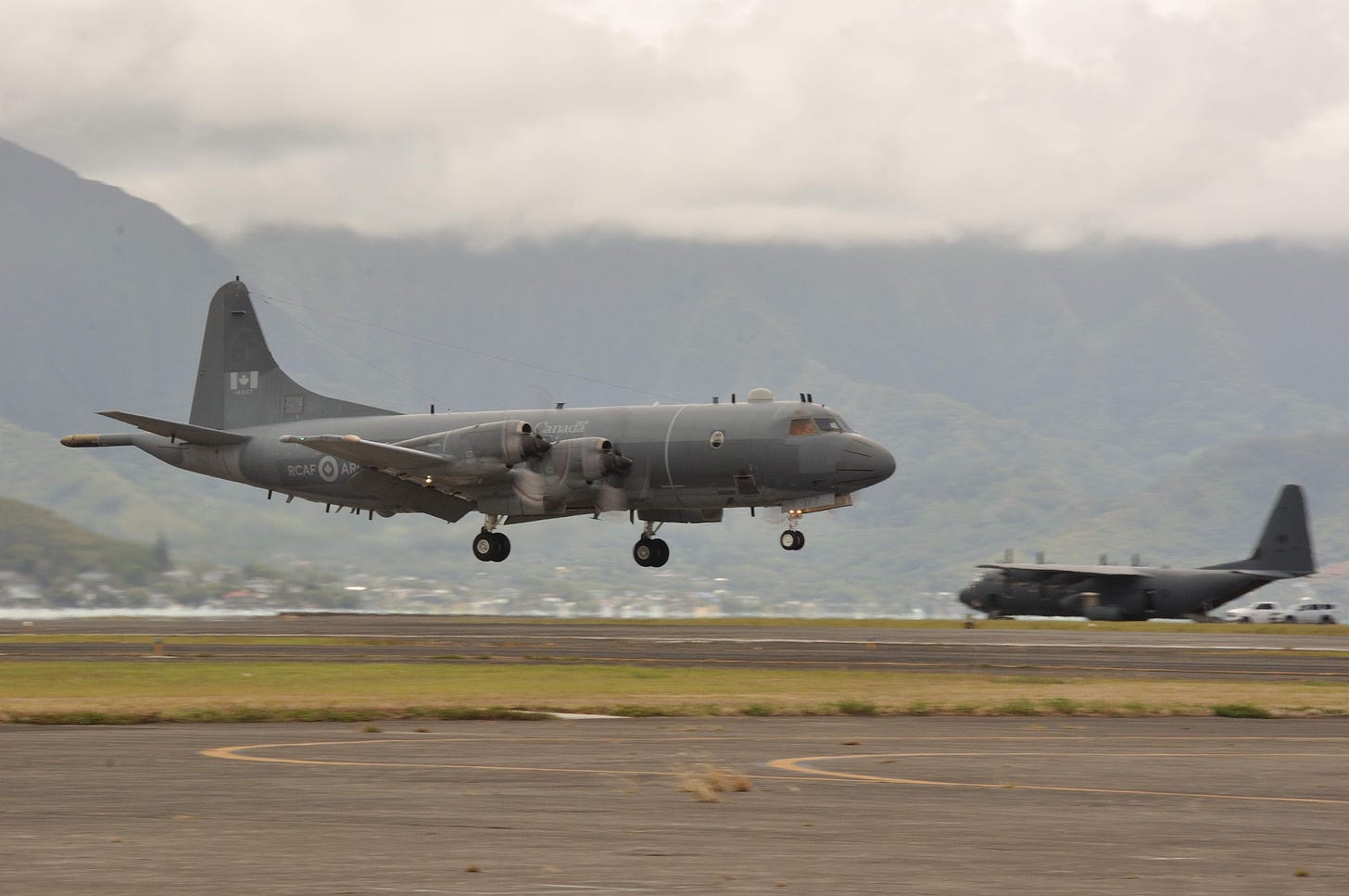
A few days later, a Falcon 200 jet, likely used by a Mexican cartel, crash-landed in western Venezuela. The jet was reportedly flying without a transponder and was forced to land after being pursued by Venezuelan Air Force aircraft. While not uncommon, incidents like this one highlight increase in the use of aircraft by criminal organisations.
In the first week of February, Indian-made jets landed on the Indian INS Vikrant aircraft carrier for the first time. An LCA-NP2 jet successfully landed and took off from the ski-jump ramp of the ship, which is undergoing a test campaign with various aircraft, including MiG-29Ks and helicopters, ahead of full operational service.
In the early morning of February 6, a powerful earthquake struck Turkey and Syria. While the earthquake itself isn’t aerospace news, the humanitarian response saw hundreds of flights ferrying supplies and rescue teams to the region. Twitter user Gerjon has tracked and quantified the airlift, which you can access here:
The day after the earthquake, Iran unveiled a new underground air base in the southern Hormozgan province. The New York Times later revealed that satellite imagery shows a mockup of a Russian Su-35 jet at the air base. The type is currently not in service by the Iranian Air Force, but is expected in early 2023 as Iran continues to support Russia in the war with Ukraine with drones.
Side note: these newsletters will only include major aerospace from the war in Ukraine to make sure the war does not flood the newsletters
While the New York Times used satellite imagery from Planet, the National Geospatial-Intelligence Agency awarded Maxar Technologies a contract to provide commercial satellite imagery to U.S. allies and partners. The contract, which is worth $192 million over five years, includes ‘‘high-resolution electro-optical imagery and synthetic aperture radar products.’’
On February 6, the Royal Air Force announced that a P-8 Poseidon dropped a UNIPAC-III Search and Rescue kit from its weapons bay into the sea off the southwestern coast. The kit can support up to 20 persons for 72 hours, but five systems can be carried and delivered in a single airdrop. Operational capability is expected to be achieved in April 2023. Although the RAF did not disclose the specific date of the test, tracking data shows the test was conducted on January 31, 2023.
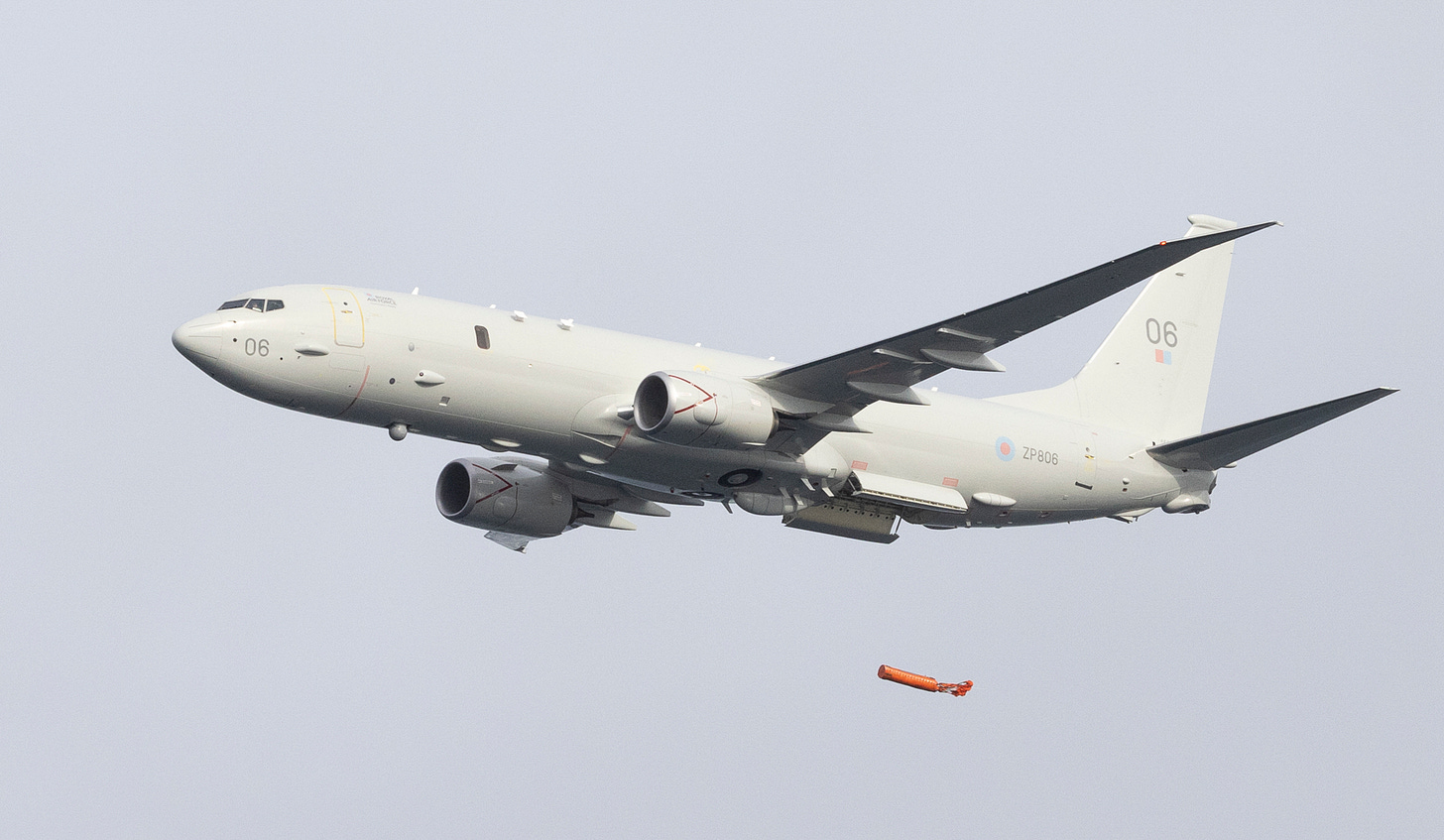
On February 9, North Korea showcased more ICBM launchers than ever before during a military parade. Next to the 10-12 Hwasong-17 systems, the parade included a new mock-up or prototype of a future solid-fuel ICBM. As the weapon was paraded in a canister launcher, it is unknown how far its development has progressed.
While North Korea displayed its military forces, North Korea’s neighbour Japan is planning to replace their attack and observation helicopters with unmanned systems. The plans to acquire new attack helicopters to replace the AH-1 helicopters are cancelled and the JMSDF is also looking into reducing the planned number of P-1 maritime patrol aircraft in favour of unmanned wide-area maritime surveillance systems.
Australia, however, deployed a crewed P-8 Poseidon maritime patrol aircraft to Japan to monitor ‘‘illicit maritime activities, including ship-to-ship transfers with North Korean-flagged vessels.'' The aircraft will operate out of Kadena airbase in southern Japan until early March 2023.
On February 9, Janes reported that the Indonesian Ministry of Finance approved a request from the Indonesian military to procure unmanned combat aerial vehicles for up to $200 million and UCAV-mounted armaments with a limit of $38 million with foreign loans.
A day later, the U.S. military and F-35 manufacturers found a potential solution to issues with the high-pressure fuel-delivery system that halted deliveries of new jets. The issue was found after a mishap with a newly built F-35B during an acceptance flight on December 15, 2022.
While a solution was found for the F-35s, the U.S. military decided to ground an undisclosed number of V-22 Ospreys to fix the hard clutch engagement issue. The issue can potentially damage the drive train system and throw the tilt-rotor aircraft off balance when the power load is rapidly transferred between the two engines.
On February 12, Poland took delivery of an undisclosed number of MQ-9 Reapers that were leased from the United States ‘‘as part of an urgent operational need.’’
On February 13, Northrop Grumman announced that an MQ-4C Triton successfully demonstrated its gateway technology during a flight test. Equipped on Northrop Grumman’s MQ-4C Triton Flying Test Bed, the gateway system shared ‘‘fifth-generation sensor data to ground-based simulators that represented an F-35, an E-2D Advanced Hawkeye, U.S. Navy Aegis class destroyers and carrier strike groups.’’
While Northrop Grumman tested a gateway system to share sensor data, the U.S. Air Force is looking into whether unmanned wingmen flying alongside piloted aircraft could be controlled from a nearby battle management or refuelling aircraft. In addition to operating these ‘collaborative combat aircraft’ from the fighter itself, the Air Force is studying operating them from KC-46 Pegasus or E-7 Wedgetail aircraft as well.
That same week, Lockheed Martin revealed more details of a series of test flights with their modified F-16 jet. In a series of 12 test flights in December 2022, Artificial Intelligence piloted the X-62A jet with one flight lasting longer than 17 hours. The test campaign also included AI-piloted dogfights against a variety of simulated opponents within and beyond visual range. The X-62A used DARPA’s Air Combat Evolution program and the AFRL’s Autonomous Air Combat Operations for these ‘advanced fighter manoeuvres.’
On February 16, sixteen NATO allies, as well as Finland and Sweden, launched the largest space project in NATO’s history. The Alliance Persistent Surveillance from Space initiative will connect both national and commercial space assets in a virtual constellation called Aquila. The project aims to ‘‘streamline data collection, sharing and analysis (…), while generating cost savings.’’
NATO’s European Sky Shield Initiative got two more participants on February 15 as Denmark and Sweden decided to join the program. The ESSI aims to ‘‘create a European air and missile defence system through the common acquisition of air defence equipment.’’
In mid-February, Raytheon was awarded a foreign military sales contract through the US Navy to provide the Joint Precision Approach and Landing System to Japan’s Maritime Self-Defense Force. The software, which aids aircraft landings onboard aircraft carriers and amphibious vessels, is already widely used by the US Navy, the Royal Navy and the Italian Navy.
In addition to the new software, Japan decided to acquire up to 400 US-made Tomahawk cruise missiles by March 2024 ‘‘to help boost counterstrike capabilities.’’
While the details of Japan’s counterstrike capabilities remain classified, Breaking Defense reported that the Department of Defense is considering lowering the classification standards of military space programs. While there were no official statements on a decision, the secretive Space Rapid Capabilities Office of the U.S. Space Force has been releasing more details about their projects over the last few weeks.
On February 15, the U.S. Air Force Materiel Command grounded the entire fleet of KC-135, RC-135 and WC-135 fleet to inspect critical tail pins before their next flight. The inspection takes ‘‘about half an hour’’ and the vast majority were quickly cleared to continue flight operations.
A day later, Northrop Grumman announced that the company has successfully completed a series of wind tunnel tests of the new LGM-35A Sentinel intercontinental ballistic missile. The first test flight is still expected for this year, but ‘‘there’s little margin’’ in the schedule.
That same week, General Atomics announced a partnership with Divergent Technologies to ‘‘optimize the design and manufacturing processes’’ of next-generation small (< 225 kg) unmanned aircraft systems ‘‘at the lowest cost.’’
Later in February, the chief of Boeing aircraft manufacturer’s defence wing visited Israel to push for the sale of refuelling aircraft and fighter jets. The official said that the company would be supplying the Israeli Air Force with 25 F-15IA, the Israeli variant of the F-15EX, with options for 25 more. The jets are expected to arrive in 2028 and the first of four KC-46 tankers is scheduled to arrive in 2025, but Israel is expected to push for an accelerated timeline.
While President Biden was in Kyiv on February 20, Russia carried out a scheduled test of an intercontinental ballistic missile. The test of the Sarmat ICBM appears to have failed during the second stage flight, but the details have not been confirmed.
The day after the ICBM test was filled with news from the United Arab Emirates, starting with a new unmanned combat aerial vehicle named Jeniah and eleven other new unmanned systems. That same day, Serbia’s president announced that the country will acquire UAE-made loitering munitions. The UAE is not only selling products, as the country is now in the latest stages of negotiations about the acquisition of MQ-9B SeaGuardian aircraft.
While the UAE is still in the negotiation phase, Indonesia took delivery of the first of five C-130J-30 Super Hercules transport aircraft on February 21.
On February 23, Boeing announced that the company expects to end production of new F/A-18 Super Hornets in 2025. Production could be extended by two years if the F/A-18 Super Hornet is selected by an international customer, which is likely a reference to a possible Indian Navy contract.
While Boeing is planning to close a production line, South Korea’s Korea Aerospace Industries has won a $920 million contract from Malaysia to deliver eighteen FA-50 light attack jets, with delivery set to begin in 2026.
Malaysia is not the only country acquiring new aircraft as Malaysia’s neighbour Singapore announced the acquisition of a second tranche of eight F-35Bs on February 24.
After many delays, Boeing stated this month that the company has finally developed ‘‘the right solution’’ for the remote vision system for the boom operator on the KC-46A Pegasus tanker aircraft. Implementation remains more than two years away, but the system is now ready to be integrated for aerial refuelling operations.
As the Russian military is relocating air defence systems from Syria to Russia, Iranian state media stated that ‘‘it is very likely’’ that Iran will sell radars and defence missiles to ‘‘reinforce Syria’s air defences.’’
On February 27, the U.S. government approved the sale of 63 AGM-88G AARGM-ER long-range anti-radiation missiles to Australia. Earlier this month, the US Navy shared that the service plans to demonstrate the ability to launch the AGM-88G AARGM-ER missiles from a ground-based launcher this year. The US Navy is also looking into adding the ability to launch the missile from the P-8 Poseidon aircraft.
Australia can now get US-made missiles, but the country is also domestically developing and producing advanced systems. The latest addition, and Australia’s first domestically designed vertical take-off and landing drone, was revealed by BAE Systems Australia on February 28. STRIX is described as a ‘‘multi-domain and multi-role UAS’’ that ‘‘could be used for a variety of missions including air to ground strike against hostile targets and persistent intelligence, surveillance, and reconnaissance missions” in high-risk environments.
In the last week of February, photos emerged of India’s first C-295 transport aircraft at the Airbus Defence & Space’s San Pablo site in Spain. The country is set to acquire 56 C-295M transport aircraft in the coming years.
The month ended with a U.S. Air Force announcement that the service awarded Boeing a $1.2 billion contract to begin work on the E-7A Wedgetail aircraft. The E-7As will primarily serve as an airborne early warning and control aircraft with ELINT tasks as a secondary mission. Production is set to begin in fiscal 2025, with the first E-7A scheduled to be fielded by fiscal 2027. The total number of E-7As is ‘‘projected to be 26’’ and will replace the fleet of E-3 Sentry aircraft.
Orbital launch statistics
Below is an overview of February’s successful orbital launches. Although it’s worth noting that many satellites can be used for military purposes, February has not seen any military satellites launching into space.
United States: 5 launches; 182 satellites
Russia: 3 launches; 3 satellites
China: 2 launches; 2 satellites
India: 1 launch; 3 satellites
Total: 11 launches; 190 satellites
Thank you
Thank you for reading the second edition of the monthly newsletter about military aviation and spaceflight! Subscribe to get the next edition directly in your inbox and feel free to reach out with your thoughts, questions and/or suggestions.




